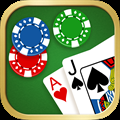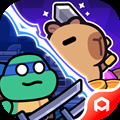
Getting Started on Your Pokémon Journey
To begin your adventure as a Pokémon Trainer, start by downloading the Pokémon Go app on your smartphone or tablet from the Google Play Store for Android devices or the App Store for iOS devices. While the game is supported on tablets, the experience may not be as optimal on larger screens compared to a phone.
After installing the app, you’ll need to create an account. This can be done using your Google account, Facebook account, Pokémon Trainer Club account, or Niantic Kids account, with Google and Facebook accounts generally offering the most seamless login experience. Once logged in, you’ll be guided to set up your in-game avatar, where you can customize your trainer’s gender, clothing, and accessories. The customization options are plentiful, and you can always update your avatar’s look as you progress through the game. As a beginner, it’s important to familiarize yourself with the basic mechanics of the game, such as catching Pokémon, visiting PokéStops, and battling at Gyms.
The Pokémon Go Beginner Guide will provide you with the essential tips and strategies to help you get started, including how to effectively use items, understand the game’s map, and navigate through the world of Pokémon. With each new level you achieve, more features and challenges will open up, helping you dive deeper into the Pokémon Go universe. Keep an eye on events and in-game challenges, as these will enhance your experience and keep you engaged as you strive to become a master Pokémon Trainer.
Exploring the World Around You
As you start playing Pokémon Go, you’ll quickly notice that the in-game map reflects your real-world location, creating an immersive experience. This map will highlight various points of interest, including wild Pokémon that you can discover and catch. To begin an encounter with a wild Pokémon, simply tap on it when it appears on the map. This will switch you to a catch screen, where your device’s camera will overlay the Pokémon onto your real-world surroundings, creating an augmented reality (AR) experience. If you prefer, you can disable AR mode and catch Pokémon without the camera effect.
While exploring the map, you’ll also come across two key types of real-world landmarks: PokéStops and Gyms. PokéStops are marked by blue icons and are typically located at places of local significance such as historical markers, public art, or businesses. When you’re within range of a PokéStop, tap on the blue icon to access its Photo Disc. Spinning the disc rewards you with free items such as Poké Balls, Berries, Potions, and even Pokémon Eggs.
However, after spinning a PokéStop, there is a brief cooldown period before you can collect items from it again. Gyms, which are represented by larger structures on the map, are special locations where you can engage in battles against other players and their Pokémon. Gyms become especially important once you reach Trainer Level 5, as this is when you gain access to gym battles, which are crucial for leveling up and strengthening your team. Engaging with PokéStops and Gyms will be a core part of your Pokémon Go journey as you explore your surroundings and expand your collection of Pokémon.
Catching Wild Pokémon
When you encounter a wild Pokémon in Pokémon Go, the catch screen will appear, and you’ll need to throw a Poké Ball at the Pokémon to try and catch it. A colored ring will surround the Pokémon, indicating how difficult the catch will be. Green and lime-green rings represent very easy and easy catches, respectively, while yellow indicates an average difficulty, orange signifies a difficult catch, and red means the catch will be very challenging. The difficulty of the catch depends on several factors, including the Pokémon’s Combat Power (CP), your Trainer Level, and any items you’re using.
To increase your chances of successfully catching a Pokémon and earning bonus XP, you can aim for Nice, Great, or Excellent Throws. These are determined by landing the Poké Ball within the colored ring when it reaches certain sizes. A Nice Throw occurs when the ring is large, a Great Throw when it’s medium-sized, and an Excellent Throw when it’s small. Performing a Curveball can further improve your chances of a successful catch and increase your XP bonus.
To throw a Curveball, simply spin the Poké Ball before releasing it. If you’re lucky enough to land an Excellent Throw on the smallest difficulty circle, you might even trigger a Critical Catch, which guarantees the capture of the Pokémon, provided it’s a standard wild one.
As you progress in the game, you’ll gain access to various types of Poké Balls, each with different catch rates. Poké Balls are the basic type. Great Balls, which become available at Level 12, provide a 50% higher catch rate than a standard Poké Ball. Ultra Balls, unlocked at Level 20, double the base catch rate. Master Balls are extremely rare and guarantee a successful capture of most Pokémon. Premier Balls are earned by participating in Raid Battles or rescuing Shadow Pokémon, while Beast Balls are used specifically for capturing Ultra Beasts.
You can obtain most of these specialized Poké Balls from PokéStops, the in-game shop, and as rewards for completing research tasks. As you level up and improve your catching skills, you’ll have more tools at your disposal to capture a wide variety of Pokémon.
Utilizing PokéStops and Collecting Items
PokéStops are essential for keeping your inventory stocked as you explore the world of Pokémon Go. By spinning the Photo Disc at a PokéStop, you can collect various important items to help you in your journey. These items include different types of Poké Balls, which are necessary for catching wild Pokémon, and Berries that can make the capture process easier.
For example, Razz Berries increase the likelihood of successfully catching a Pokémon, while Pinap Berries give you double the amount of Candy when the Pokémon is caught. In addition, you’ll also find Potions and Revives, which are used to heal your Pokémon after battles, ensuring they remain ready for future encounters. Occasionally, you might also receive Pokémon Eggs, which require you to walk a certain distance with them in an Incubator before they hatch into new Pokémon.
To further enhance your experience at PokéStops, you can place Lure Modules on them to attract more wild Pokémon to that location for a period of 30 minutes. The effects of Lures benefit all players near the PokéStop, encouraging cooperative play and helping everyone increase their catch opportunities.
Gyms not only serve as battlegrounds but also function like PokéStops, allowing you to spin their Photo Discs for valuable items. Although the rewards from Gyms are similar to those of regular PokéStops, they tend to provide more Revives and Potions, which are especially useful for keeping your Pokémon in top condition for battles. As you interact with a specific Gym, you will earn badge points (BP), which contribute to leveling up the Gym’s badge. When a Gym’s badge reaches a higher level, it will reward you with more items per spin, making it an even more valuable resource as you continue your adventure and engage with more challenges.
Joining a Team and Engaging in Gym Battles
Once you reach Trainer Level 5 in Pokémon Go, you’ll be prompted to join one of three teams: Mystic, led by Blanche; Valor, led by Candela; or Instinct, led by Spark. Each team has its own unique philosophy. Mystic is known for being calm, logical, and data-driven, Valor is passionate, focused on strength and battle readiness, and Instinct is all about having fun and trusting one’s instincts. Your team choice will influence some aspects of gameplay, particularly how you interact with Gyms. When appraising Pokémon, you’ll see your team leader, and you’ll work with your teammates to take control of Gyms, making it an important decision for your progression.
Gyms in Pokémon Go can be controlled by one of the teams, with each team’s Gym color reflecting the team in charge. To challenge a Gym controlled by another team, you can battle against the Pokémon stationed there, reducing their motivation, which is represented by a heart icon.
As a Pokémon’s motivation decreases, its Combat Power (CP) also drops, making it easier to defeat. Once you’ve defeated all the defending Pokémon in a Gym, it becomes neutral, and you can place one of your own Pokémon there to claim it for your team. If the Gym is already controlled by your team and has available slots (up to six Pokémon can defend a Gym), you can also place your Pokémon there to help defend it.
Defending a Gym earns you valuable rewards like PokéCoins and Stardust over time. The longer your Pokémon stays in a Gym, the more rewards you’ll accumulate, but there’s a daily limit to how much you can earn. Additionally, you can feed Berries to the Pokémon defending your team’s Gyms to restore their motivation, which helps them stay in the Gym longer. In return, you’ll earn a small amount of Stardust and may even receive a chance for a Candy specific to that Pokémon species, which will help you strengthen and evolve your Pokémon. This gameplay element adds a layer of strategy, as you work to maintain control of Gyms and collect rewards while managing your Pokémon’s motivation and strength.
Progressing as a Trainer
As you explore the world of Pokémon Go, catch Pokémon, and interact with PokéStops and Gyms, you’ll earn Experience Points (XP). Accumulating enough XP will allow you to level up your Trainer Level, which unlocks a variety of new in-game features and rewards. As you level up, you’ll gain access to more powerful items, higher CP Pokémon encounters, and the ability to engage in more advanced gameplay elements, such as Raids. Additionally, leveling up opens the door to new challenges and opportunities, keeping the game fresh and engaging as you progress.
There are several ways to earn XP in Pokémon Go. Catching Pokémon is one of the most common ways, and you’ll receive bonus XP for achievements like making your first catch of the day, catching a Pokémon with a particular type of throw (Nice, Great, Excellent, or Curveball), or catching a Pokémon with a higher CP than usual.
Evolving Pokémon also rewards you with XP, especially if you do it during special events or using special evolution items. Hatching Eggs is another excellent source of XP, and this can be especially rewarding if you’ve been incubating Eggs with high-distance requirements. Spinning PokéStops, winning battles, and completing Research Tasks are also great ways to gain XP and progress through the game.
Reaching higher Trainer Levels often comes with specific research requirements or tasks that need to be completed, adding an extra layer of challenge and focus. These requirements ensure that your journey is filled with a variety of activities and objectives, encouraging you to keep exploring, battling, and catching Pokémon to continue leveling up and unlocking new features. Each level-up feels like an accomplishment and brings new possibilities, keeping the game dynamic and rewarding.
Understanding and Growing Your Pokémon
In Pokémon Go, each Pokémon has its own unique set of statistics, with the most important being Combat Power (CP) and Hit Points (HP). CP is a measure of a Pokémon’s strength in battle, determining how effective it will be in gym battles and raids. HP, on the other hand, indicates how much damage a Pokémon can take before being defeated in combat. Both of these stats are critical when it comes to training and using your Pokémon effectively.
To enhance your Pokémon’s CP and HP, you can use resources like Stardust and Candy. Stardust is a universal currency that can be earned through various activities such as catching Pokémon, hatching Eggs, completing research tasks, and participating in battles. Candy is specific to each Pokémon species and its evolutionary line. You can obtain Candy by catching Pokémon, hatching Eggs, walking with Pokémon as your Buddy, and transferring unwanted Pokémon to Professor Willow. Each Power Up, which boosts a Pokémon’s CP and HP, requires a certain amount of Stardust and Candy, making these resources essential for strengthening your Pokémon.
Evolution is another key element in powering up your Pokémon. By collecting enough Candy for a specific Pokémon, you can evolve it into a stronger form, often resulting in a Pokémon with higher CP and new abilities. The number of Candies needed to evolve a Pokémon varies by species, with some requiring a significant amount. Additionally, certain Pokémon have special evolution methods that go beyond just gathering Candies.
For instance, some Pokémon require specific evolution items, such as Evolution Stones, which can be obtained from PokéStops. Other Pokémon may need to be evolved during specific tasks with your Buddy Pokémon, or even at certain times of the day to trigger evolution. This system adds a layer of depth and strategy to how you strengthen and develop your Pokémon collection.
Engaging in Battles
Pokémon Go provides a variety of ways to engage in battles, offering exciting challenges through Gym Battles, Raids, and the Go Battle League. As previously mentioned, Gym Battles allow you to fight against opposing teams to take control of Gyms, but there are also other battle formats that add depth to the gameplay.
Raids are a special type of Player vs. Environment (PvE) encounter where you and other players team up to battle powerful Raid Bosses located at Gyms. These Raid Bosses come in different difficulty levels, which are indicated by colored Eggs that appear atop Gyms before the Raid starts.
To participate in a Raid, you’ll typically need a Raid Pass. You can get a free Daily Raid Pass by spinning the Photo Disc at a Gym, while Premium Battle Passes, available in the in-game shop, can be purchased to access Raids. Additionally, Remote Raid Passes allow you to join Raids that are far away from your current location, though there are daily limitations on how many you can use and which Raids they apply to. Defeating a Raid Boss rewards you with valuable items and gives you a chance to catch the powerful Pokémon. For higher-level Raid Bosses, teaming up with other Trainers is often essential, as cooperation increases your chances of success.
The Go Battle League, on the other hand, is Pokémon Go’s Player vs. Player (PvP) arena, where you can build your own team of Pokémon and face off against other Trainers from around the world. As you participate in these battles, you earn rewards and increase your rank based on your performance.
The Go Battle League features different leagues and cups, each with its own set of rules and restrictions on the CP (Combat Power) of the Pokémon you can use. These specific regulations help balance the competition and provide a variety of strategic challenges as you work your way through the ranks. Whether you’re tackling Raids with friends or competing in the Go Battle League, these battle modes offer exciting ways to test your skills and gain rewards in Pokémon Go.
Confronting Team GO Rocket
As you explore in Pokémon Go, you may encounter Team GO Rocket Grunts at invaded PokéStops, which will appear with a darker color and a twitching animation. These Grunts are part of Team GO Rocket’s efforts to take control of the world’s Pokémon, and by battling and defeating them, you’ll have the opportunity to catch their Shadow Pokémon. Shadow Pokémon are distinguishable by their red aura and are known for having higher attack power but lower defense, making them a valuable asset in battles.
When you defeat a Team GO Rocket Grunt, you’ll also receive Mysterious Components. If you collect six of these components, you can craft a Rocket Radar, which will help you locate and challenge Team GO Rocket Leaders: Arlo, Sierra, and Cliff. These Leaders are significantly more difficult to defeat than Grunts, as they use stronger Shadow Pokémon. Beating one of the Leaders will reward you with the chance to catch a rare Shadow Pokémon, and you may also receive a Super Rocket Radar, which allows you to track down the boss of Team GO Rocket, Giovanni.
Giovanni is the ultimate challenge in the Team GO Rocket storyline. By defeating him, you’ll have the opportunity to catch a Legendary Shadow Pokémon, making it one of the most sought-after achievements in the game. Shadow Pokémon are powerful but come at a cost—while they have increased attack power, their defense is lower, making them more vulnerable to attacks.
However, you have the option to purify your Shadow Pokémon, using Stardust and Candy to do so. Purifying these Pokémon restores their defense and removes their red aura, boosting their overall stats. Additionally, purified Pokémon require less Stardust and Candy to power up and evolve, though they will lose the attack bonus that their Shadow form provided. Purifying is a strategic choice, as it improves their overall effectiveness but sacrifices the unique strengths of their Shadow form. Whether you choose to keep a Pokémon as a Shadow or purify it depends on your goals and the kind of battles you plan to take on.
Utilizing Items Effectively
Throughout your Pokémon Go journey, you’ll acquire a variety of items that will aid you in catching, powering up, and evolving your Pokémon. While we’ve already discussed essentials like Poké Balls, Berries, Potions, and Revives, there are many other items that play a key role in your adventure.
Eggs and Incubators are important for hatching Pokémon. Eggs hatch into Pokémon after you walk a certain distance with them in an Incubator. You begin with a limited-use Incubator, but you can obtain additional Incubators with limited or unlimited uses through various in-game activities. These Incubators help you hatch Pokémon that may be harder to find through regular encounters, adding a sense of excitement and surprise.
Lure Modules are items you can use at PokéStops to attract more wild Pokémon to that location for a set period. These are beneficial for both solo players and groups, as they increase the chances of encountering rarer Pokémon and encourage cooperation among nearby Trainers.
Incense is another useful item that attracts wild Pokémon to your current location for a limited time. There’s also a special version called Daily Adventure Incense, which can attract rare Pokémon, providing unique opportunities for those exploring daily.
Lucky Eggs are extremely useful for increasing your XP gain. They double the amount of XP you earn for a limited time, making them a valuable tool for Trainers looking to level up quickly. Similarly, Star Pieces increase the amount of Stardust you earn for a set period, helping you gather more of this essential resource for powering up your Pokémon and using other items.
Technical Machines (TMs) are items that allow you to teach your Pokémon new moves. There are Fast TMs, which change the Fast Attack, and Charged TMs, which alter the Charged Attack. Elite Fast TMs and Elite Charged TMs are rarer and give you the ability to teach your Pokémon exclusive or legacy moves, making them particularly valuable for optimizing your Pokémon for battle.
Rare Candy is a versatile item that can be converted into Candy for any Pokémon species. This makes it a valuable resource, especially for evolving and powering up rare or difficult-to-find Pokémon, as you can use it for any Pokémon in your collection.
Evolution Items, such as Sinnoh Stones and Unova Stones, are required to evolve certain Pokémon. These special items can be found through various in-game activities, and some specific Pokémon can only evolve when using these items, adding a layer of strategy to your evolution choices.
Raid Passes are another important item, as they allow you to participate in Raid Battles. These are essential for tackling high-level Raid Bosses and obtaining powerful Pokémon that can be added to your team, and there are different types of Raid Passes, including the free Daily Raid Pass and premium options that can be purchased.
Each of these items serves a unique purpose and plays an important role in your quest to become a top Pokémon Trainer, so it’s important to manage and use them wisely as you progress in the game.
Engaging in Research Tasks
Research Tasks are a great way to enhance your experience in Pokémon Go, providing you with goals and missions that reward you with XP, Stardust, items, and Pokémon encounters. There are three main types of Research Tasks that you’ll encounter during your journey: Field Research, Special Research, and Timed Research.
Field Research tasks are one-time objectives you receive by spinning the Photo Disc at PokéStops. Each day, you’ll be given one random task for every PokéStop you visit, and completing these tasks will earn you various rewards. These tasks can range from simple objectives like catching specific types of Pokémon to more complex tasks like evolving Pokémon. Field Research offers a steady stream of rewards and opportunities to encounter different Pokémon, making them an essential part of progressing in the game.
Special Research tasks are story-driven quests provided by Professor Willow. These quests are multi-step challenges that often revolve around investigating mysterious Pokémon or events in the Pokémon world. Unlike Field Research, which are one-off tasks, Special Research tasks unfold over multiple stages and require you to complete a series of objectives. Special Research often rewards you with encounters with rare or Mythical Pokémon, and completing the entire questline provides substantial rewards, both in terms of gameplay and Pokémon encounters.
Timed Research tasks are available during specific events or limited-time periods and have strict deadlines. These tasks usually align with special in-game events and provide unique rewards if you manage to complete them within the given timeframe. Timed Research is an excellent way to participate in special events, earn exclusive Pokémon, or get limited-time items, but they require quick action to complete before the event ends.
Completing Research Tasks is an enjoyable way to progress through Pokémon Go, discover new Pokémon, and earn valuable resources like Stardust, Berries, and items to help power up and evolve your Pokémon. Engaging with these tasks adds layers of depth to your gameplay, offering both short-term rewards and long-term goals to work toward.
Participating in Events
Pokémon Go frequently hosts in-game events that offer unique experiences and bonuses, providing exciting opportunities for Trainers to engage with the game in new ways. These events often come with special features like increased spawn rates, exclusive Pokémon, and additional rewards, making them an essential part of your Pokémon Go journey.
Community Days are monthly events that focus on a specific Pokémon, increasing its spawn rate and providing an exclusive move for its evolved form during the event hours. These events are often accompanied by other bonuses, such as increased XP or Stardust gain, making them a great opportunity to level up your Pokémon and catch rare creatures. Community Days are a highlight for many players, offering a chance to build up a collection of special Pokémon with unique moves.
Spotlight Hours are weekly events that focus on a particular Pokémon with a dramatically increased spawn rate for one hour. These events usually come with additional bonuses, like double transfer Candy or double evolution XP, making them a perfect time to catch large numbers of a specific Pokémon or accelerate your progress in evolving and powering up your creatures.
Seasonal Events are tied to real-world seasons or holidays, featuring special Pokémon encounters, themed research tasks, and unique items. These events often bring a fresh variety of Pokémon and activities that align with the time of year, giving you a reason to log in and explore the game during different seasons. Whether it’s a winter-themed event with Ice-type Pokémon or a summer event featuring Fire-type creatures, seasonal events keep the game dynamic and engaging.
Legendary Raids bring powerful Legendary Pokémon to Raid Battles for a limited time, providing Trainers with an opportunity to battle and capture these rare and formidable Pokémon. These events typically involve higher-level Raids and require you to team up with other players, making them a great chance to test your skills and catch some of the strongest Pokémon in the game.
GO Battle League Seasons introduce regular seasons within the competitive PvP (Player vs. Player) mode, each with its own themes, rewards, and rank resets. These seasons offer a structured way to compete against other Trainers in battles and earn exclusive rewards based on your performance. Participating in the Go Battle League is an excellent way to test your battle strategies and earn valuable items.
To make sure you don’t miss out on these exciting events, it’s important to stay informed by regularly checking the in-game News section. This is where you’ll find announcements about upcoming events, bonuses, and special opportunities, helping you plan your gameplay and take advantage of everything Pokémon Go has to offer.
Tips for Success
To maximize your Pokémon Go experience, explore your surroundings frequently to discover more Pokémon, PokéStops, and Gyms. Consistently collecting daily bonuses by spinning a PokéStop and catching a Pokémon each day will help you earn streaks and increased rewards. Using items strategically can significantly enhance your gameplay, such as using Pinap Berries on Pokémon you want more Candy for and activating Lucky Eggs when you’re about to earn a lot of XP.
Understanding Pokémon types and their effectiveness in battle gives you an advantage in Gyms and Raids, making battles more efficient. Participating in events allows you to catch rare Pokémon and earn exclusive rewards, so staying updated on upcoming events can be beneficial. Connecting with other players enhances your experience by allowing you to trade Pokémon, exchange Gifts, and coordinate for Raids.
Managing your inventory space is crucial, as limited bag space can become a challenge, so regularly discarding unnecessary items and considering bag upgrades from the shop can help. When powering up and evolving Pokémon, focus on those with high CP and favorable movesets for battles. The Buddy Pokémon feature is another valuable tool, allowing you to earn Candy and unlock helpful perks. Pokémon Go offers a dynamic and engaging experience that encourages exploration and interaction with the real world. By understanding the core mechanics and utilizing the various features and items effectively, you’ll be well on your way to becoming a seasoned Pokémon Trainer. So, step outside, explore, and embark on your own exciting Pokémon Go adventure!













